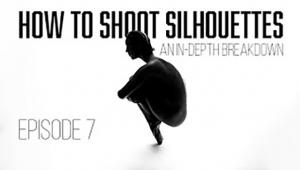Seeing Life Firsthand; The Photography Of Peter DaSilva
As a newspaper photographer, you never know when you show up in the morning
what you're going to be working on--sometimes it's an environmental
portrait, other times a feature, or a documentary image that is posed,"
San Francisco-based Peter DaSilva says.
"Whatever it is, I need to produce a picture of quality every time I'm
sent out. Though many shooters focus on a particular style, a good news photographer
has to be able to adapt on the fly, sum up a location quickly, and think of
all the different options as soon as they walk through the door. And when they
go in, whatever is happening is what they get."
Beverly Cleary |
|
 |
|
|
DaSilva was a product of the 1980s in Berkeley, California, during the anti-apartheid
movement. Though he had some interest in photography, he began to take it seriously
as he became more politically active.
"We were still protesting," he recalls, "and I would go to
these things and there was something about coming home and seeing these places
portrayed in newspapers or on the news and thinking, `wait a minute--that
didn't happen' or `it was not like that.'
"I started taking pictures for a college paper in Berkeley, The Daily
Californian. They were off-campus but produced the newspaper for the University.
I got my first published picture on the cover of a weekly. It was of protesters
being trampled by University police, a pretty violent incident.
Neil Young |
|
 |
|
|
"I began to think I wanted to photograph, that I could be a part of
history and record what I witnessed rather than sitting back and looking at
what others had to say. I saw things firsthand and recorded them, and it snowballed."
DaSilva began to meet other photographers and discover what the industry was
like, becoming a stringer for the wire services, starting with UPI and AP in
San Francisco, becoming one of their top stringers for almost four years.
"I worked under some incredible photographers like Pulitzer Prize winner
Sal Veder," he says. "Sal taught me much about life and how to deal
with people respectfully as a photographer. The gang from AP helped me hone
my skills and I am forever grateful."
John Lee Hooker |
|
 |
|
|
They taught DaSilva how to best sell the story and to become a generalist
in the sense that no matter what they threw at him he needed to produce, whether
a portrait or a documentary. Wire service photographers do everything and they
do it quickly because there are always rigid deadlines.
"Editing was done in the camera," DaSilva says, "and you really
had to look for your pictures and to assess each experience. There was not always
the luxury of setting up the lighting or a portrait subject who would give me
half a day."

















































